Most people don’t know the exact size of the tires they have on their vehicle. Most people know the diameter of their wheels, such as 15 inches, 16 inches, 17 inches etc. However, when it comes to knowing the exact tire size you have on your vehicle, and what all those numbers mean, very few people know. To make it more confusing, some vehicles with high performance suspensions have different size tires on the back and the front of their vehicle.
It’s very simple to find out what size tire you have. Your tire size is listed on the sidewall of your tire. Most newer vehicles have their tire size listed on a placard posted inside the driver’s door. You can also search the internet for your vehicle’s tire size.
What do all the numbers and letters mean? Let’s look at an example. Let’s say you drive a 2014 Ford F150 XLT. The original equipment tire on your vehicle would be a P265/70R17. “P” stands for passenger tire, even though this particular vehicle is a truck, the the tire designation is a passenger tire. 265 is the section width of the tire in millimeters, where the sidewall of the tire bulges at it’s widest point (usually at the middle of the sidewall). 70 represents what is called the aspect ratio (% of sidewall height to section width) meaning that the sidewall is 70% as tall is the tire is wide. R stands for radial and 17 represents the diameter of the wheel).
You might also occasionally see the letters “M + S” on your sidewall. This indicates that the tire has a mud and snow tread design.
The same 2014 Ford F150 in their Platinum Series comes with a tire size of P275/55R20. The tire is a (P) passenger tire, with a tread width of 275 millimeters, the sidewall is 55% as tall as the tread (section width) is wide, and the wheel diameter is 20 inches.
The same 2014 Ford F150 in their ZVT Raptor series carries a LT315/70R17. The LT stands for Light truck tire, and by now, you can figure out what the rest of the letters and numbers stand for.
Low profile tires are tires in which the aspect ratio (sidewall height to section width) is lower than 70%.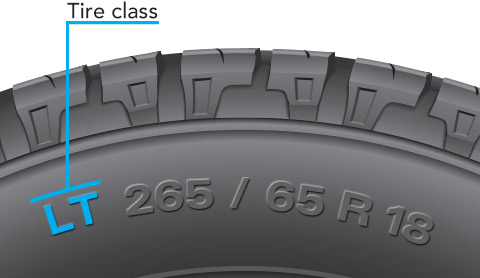 As the aspect ratio becomes smaller, the sidewall of the tire becomes shorter, or lower, hence the name, low profile tire. A tire with an aspect ratio of 40 has an extremely short (low) profile while a tire with an aspect ratio of 75 is an extremely tall tire.
As the aspect ratio becomes smaller, the sidewall of the tire becomes shorter, or lower, hence the name, low profile tire. A tire with an aspect ratio of 40 has an extremely short (low) profile while a tire with an aspect ratio of 75 is an extremely tall tire.
Other lettering used in tire sizing has to to with speed ratings and load carrying capacity. A 2015 Chevrolet Corvette comes with P245/40ZR18 (93Y) tires on the front and P285/35ZR19 (99Y) tires on the rear. The letter Z in the tire size signifies the tire’s speed rating. A “Z” rating means the tire is built to withstand speeds in excess of 151 miles per hour. Exotic vehicles such as the Corvette and other upper end performance luxury vehicles and sports cars usually have additional speed ratings that classify them to perform at certain speeds, (W & Y are the most popular). The numbers 93 and 99 signify the tires load carrying capacity.
Confused? Hopefully not. Listed below are all the speed ratings and load carrying capacity ratings you might see on your particular vehicle’s tires:
Speed Ratings
M- Up to 81 mph
N- Up to 87 mph
P- Up to 93 mph
Q- Up to 99 mph
R- Up to 106 mph
S- Up to 112 mph
T- Up to 118 mph
H- Up to 130 mph
V- Up to 149 mph
W- Up to 168 mph
Y- Up to 186 mph
Z- See above
Tire Load Carrying Capacity
The most critical thing to remember when dealing with a tire’s speed rating is that if your vehicle was built to travel at and maintain speeds of a certain level, you must keep tires on your vehicle capable of maintaining those speeds.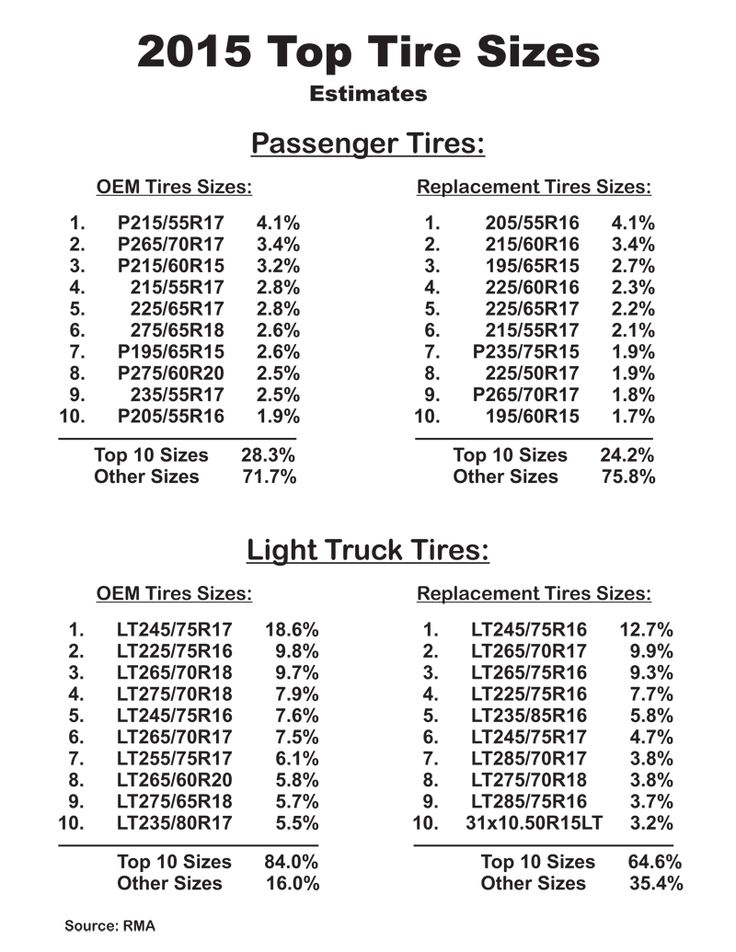 For example, if you replace a Z rated tire with an H rated tire, the tire’s speed rating just went from being able to maintain speeds in excess of 151 miles per hour to only being able to maintain speeds of up to 130 miles per hour. Making an error in judgement like this could be deadly, and most reputable tire centers will not install tires on a vehicle at a lower speed rating than what the vehicle’s original equipment calls for.
For example, if you replace a Z rated tire with an H rated tire, the tire’s speed rating just went from being able to maintain speeds in excess of 151 miles per hour to only being able to maintain speeds of up to 130 miles per hour. Making an error in judgement like this could be deadly, and most reputable tire centers will not install tires on a vehicle at a lower speed rating than what the vehicle’s original equipment calls for.
If you have questions about your vehicle’s tires, call or email Postle’s Tire Barn. Postle’s has been serving Tuscaloosa and West Alabama in the tire and automotive business for more than 35 years. Your safety is always our number one objective.
275 vs 285 tire: So when someone mentioned their tire size is 275/35 R19, what does this actually mean? 275 actually denotes the width of the tires in mm. For example a 275/35 R19 tire size, it means that the width of the tire is 275mm (~ 10.8 inch) wide.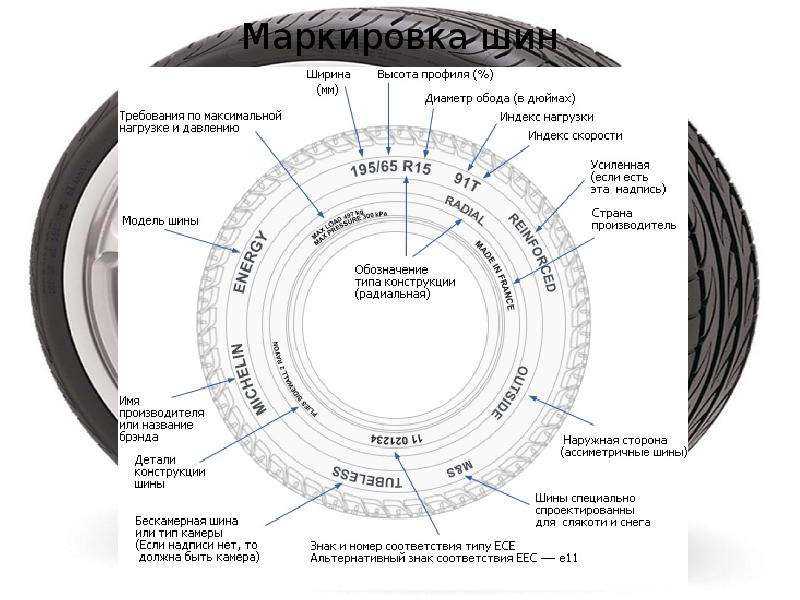 The picture below shows an illustration of the 275mm length tire width.
The picture below shows an illustration of the 275mm length tire width.
So when a consumer asks, what is the difference between 275 vs 285 tire? This question is a bit completed as the sidewall height is a function of the tire width & aspect ratio. (275/35 R19 –> 35 denotes the aspect ratio) This indirectly determines the diameter of your tire. This is the reason why when you are inching up, you tend to go up higher in width and lower in aspect ratio to keep the diameter roughly the same. We have written extensively about inching up and you can find more info here.
To get an idea what tire sizes we are comparing, below are some examples of the popular tire sizes which carry the 275 & 285 width.
| 275 | 285 |
| 275/30R20 | 285/30R19 |
| 275/35R19 | 285/30R20 |
| 275/35R20 | 285/35R18 |
| 275/35R21 | 285/35R20 |
| 275/40R18 | 285/35R21 |
| 275/40R19 | 285/40R20 |
| 275/40R20 | 285/45R19 |
| 275/40R22 | 285/45R20 |
| 275/45R20 | 285/45R21 |
| 275/45R21 | 285/70R17 |
| 275/50R20 | |
| 275/50R21 | |
| 275/50R22 |
Table of Contents
So regardless of your aspect ratio, the main key differences comparing 275 vs 285 tire comes in the footprint shape. An important point to note here is that your total footprint area stays the same regardless of what tire width you use as pressure is a function of weight. (Pressure = Force[weight]/ Area ) So please do not get swayed by articles telling you otherwise.
An important point to note here is that your total footprint area stays the same regardless of what tire width you use as pressure is a function of weight. (Pressure = Force[weight]/ Area ) So please do not get swayed by articles telling you otherwise.
However with a bigger width tire (285) you have a slightly wider footprint width compared to 275.
Image not scale, for illustration only.So how does this wider footprint actually improve the tire performance? From past studies, it is common knowledge that a wider footprint tire (285) performs better in wet braking compared to smaller width (275) one. The concept is relatively simple as the faster you are able to dissipate water to create a semi dry patch, the better your wet braking performance. So with a 285 tire width with a wider footprint, you have less contact area on a semi dry surface compared to a 275 tire width with a narrower footprint.
The same principle also holds in ice & snow braking, as a wider width tire is able to dissipate the thin liquid layer on ice & snow to create a higher friction surface to ensure a more effective way to transmit forces to the ground.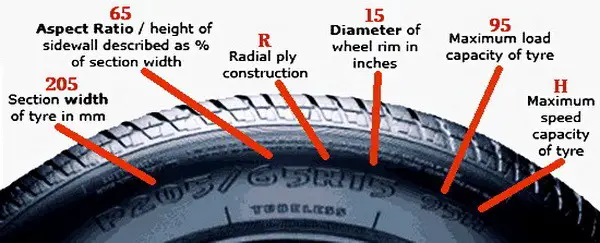
Having a long footprint width might enhance your braking performances however it does come with a noise drawback. As the exterior noise generated is correlated to your tire width, the 285 width tire will be much more noisier than the 275 width tire. To minimize noise, you would like the air flow hitting the tire contact patch as narrow as possible to reduce the air pumping effect. Like everything in tires, trade offs are a common theme 🙂
Based on the tire size table list, 275 tires are mainly used in the 30-50 aspect ratio range with the majority of the sizes in the low aspect ratio range. Notable sizes include the popular 275/40 R20 which was popularized by BMW X6 & X4 series. These tires are mostly segmented in the ultra high performance (UHP) area which has a keen interest in handling & braking performance for the sporty sedan vehicles. Notable products in the 275 range includes Michelin Pilot Sport All Season 4 & also Continental ExtremeContact DWS 06 Plus.
On the other hand 285 tires have a similar range like 285 with a big concentration of ultra ultra high performance segments. Popular sizes like the 285/30 R19 for Mercedes-Benz C-Class AMG are positioned in the UUHP segmentation. Notable products in the 285 range includes Michelin’s Pilot Sport 4s & Continental’s ExtremeContact Sport 02.
Michelin Pilot Sport 4SOverall in a comparison of 275 vs 285 tire, 285 tires come with a wider footprint which enables better wet/snow/ice braking performances compared to a 275 tire. However a 275 width tire having a narrow footprint has a better noise performance compared to a 285 width tire. I Hope this clarifies the pros and cons of 275 vs 285 tire.
Click to rate this post!
[Total: 0 Average: 0]
Using the example of the Michelin Diamaris tire with the designations 275/40 R20 106 Y, let's consider what these parameters mean:
275 - tire profile width, mm;
40 is the ratio of the height of the tire profile to its width in percent.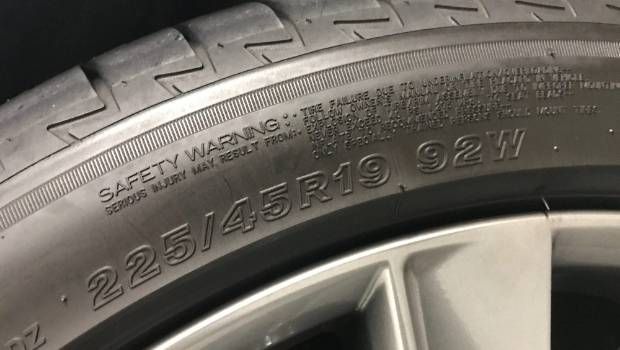 For our case, the profile height is 40% of the width (275 mm), i.e. 110 mm. Sometimes the profile height is called a series.
For our case, the profile height is 40% of the width (275 mm), i.e. 110 mm. Sometimes the profile height is called a series.
R13 - inner (landing) tire diameter. The letter R indicates a radial tire type.
106 - index or load factor. This is a conditional indicator indicating the maximum allowable load on the tire (for this case, the maximum load is 1030 kg per wheel). An explanation of the most commonly used load factors is given in the table of load indices. Often the load is deciphered on the tire itself: the inscription Max Load (translated from English maximum load) is followed by two digits, the first in kilograms, the second in pounds.
Y - speed index. This indicator indicates the maximum allowable speed at which the tire retains its performance characteristics. The decoding is given in the speed index table.
In addition to the above designations, a large number of various marks can be found on the tire. Among them you can find the following:
TUBE TYPE - tube tire design.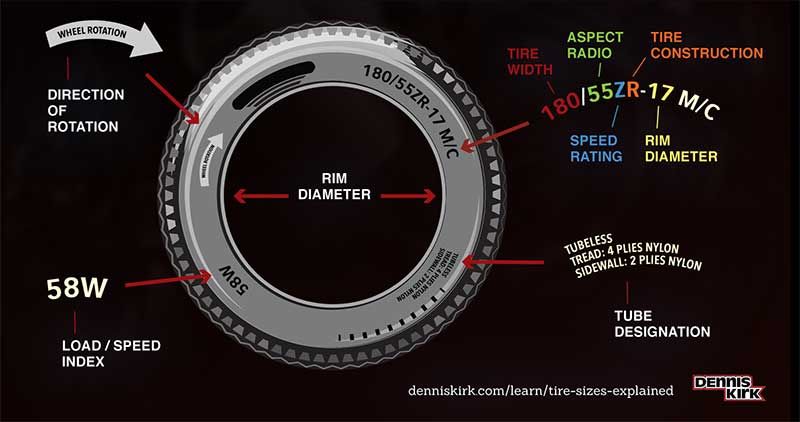
TUBELESS - tubeless tire construction.
Treadwear 380 - wear coefficient, determined in relation to the "base tire", for which it is equal to 100. The wear index is a theoretical value and cannot be directly related to the practical life of the tire, which is significantly influenced by road conditions, driving style, adhering to pressure recommendations, adjusting the vehicle's camber angles and rotating the wheels. The wear indicator is presented as a number from 60 to 620 with an interval of 20 units. The higher its value, the longer the protector withstands when tested according to the established method.
TRACTION A - friction coefficient, has the values A, B, C. Tires with coefficient A have the highest friction value in their class.
TEMPERATURE A - temperature regime, an indicator characterizing the tire's ability to withstand temperature effects. It, like the previous one, is divided into three categories A, B and C.
"E" in a circle - compliance with European standards. DOT - compliance with US standards.
DOT - compliance with US standards.
M&S (Mud + Snow - mud plus snow). This means that these tires are specially designed for winter or all-season use.
M/T (Mud Terrain) - mud landscapes.
A/T (All Terrain) - all season tires.
AS - All Season
Any Season - all season tyre.
R+W (Road + Winter) - all season tire.
All Season is an all-season tire designed for year-round use.
RAIN, WATER, AQUA (or the "umbrella" icon) - means that these tires are specially designed for rainy weather and have a high degree of protection against the effect of aquaplaning.
PLIES: TREAD - tread compound, SIDEWALL - sidewall compound.
MAX LOAD - maximum load, kg / English pounds.
MAX PRESSURE - maximum internal tire pressure, kPa.
ROTATION - direction of rotation.
LEFT - the tire is installed on the left side of the car.
RIGHT - the tire is installed on the right side of the car.
OUTSIDE or Side Facing Out - the outside of the unit.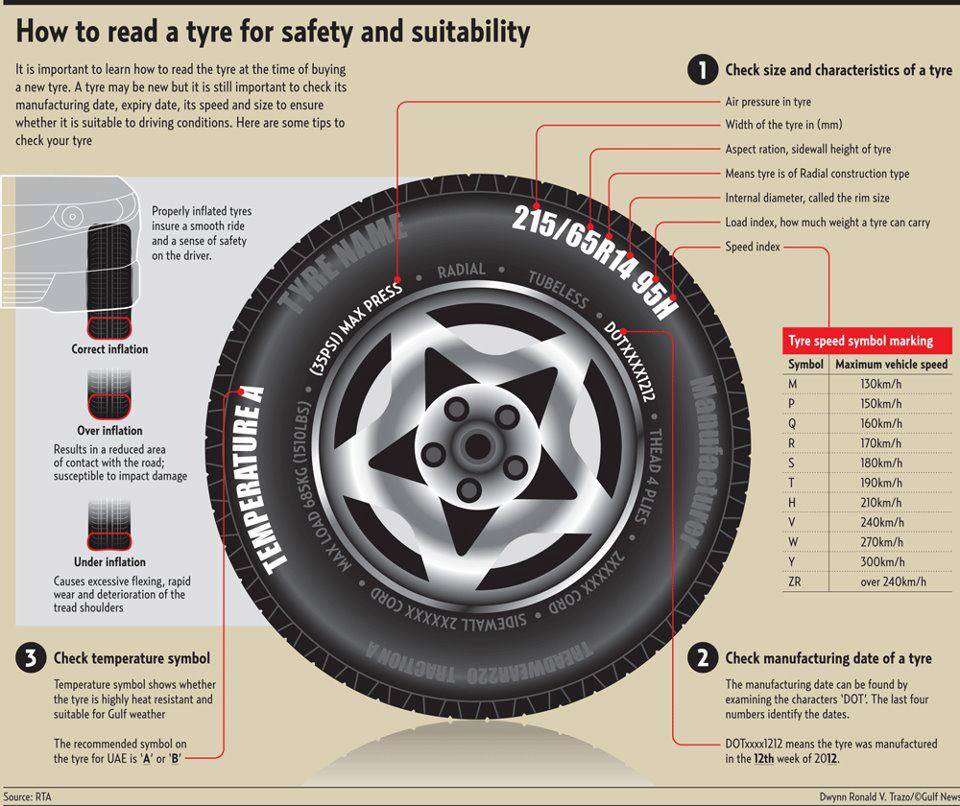
INSIDE or Side Facing Inwards - the inside of the unit.
MADE IN FINLAND - country of manufacture.
Extra Load (XL) - increased load index.
Reinforced (Reinf or RF) - increased load index.
On light trucks and minibuses, tires with 6PR and 8PR are most commonly used. The increased plyiness (i.e. strength) of the tire may be indicated by the letter "C" (commercial), which is placed after the designation of the landing diameter (for example, 185R14C)
TWI - the sign is located on the sidewall of the tire and shows the location of the marks of the residual tread height in the main grooves. For the countries of the European Union and the Russian Federation, the remaining tread depth of a worn passenger tire must be at least 1.6 mm.
ZP - zero pressure (Zéro Pression), Michelin's commercial designation for tires with reinforced sidewalls. ZP : Ability to continue driving in the event of a puncture for a distance of up to 80 km at a speed of up to 80 km/h.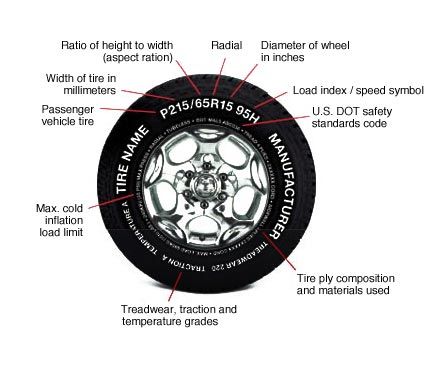 ZP SR : Ability to continue driving in the event of a puncture up to 30 km at speeds up to 80 km/h.
ZP SR : Ability to continue driving in the event of a puncture up to 30 km at speeds up to 80 km/h.
SST - Self Supporting Tires. Such tires can carry the load and continue to move after a puncture.
Studless - not half studded.
Studdable - to be studded.
There are tire models, or rather tire models in a specific size, that are recommended for installation on a specific car brand. In this case, tires are marked with the following marks:
N0, N1, N2, N3 - tires recommended for Porsche;
C1 - tires recommended for Chrysler;
K1 - tires recommended for Ferrari;
B - tires recommended for Audi, Bentley;
* - tires recommended for BMW;
MO - tires recommended for Mercedes.
10/12/2013
The choice of car tires is always a crucial moment in the life of every motorist. But for an independent choice of the right car tires, you need to know the design features and understand the basic markings that are applied to each car tire.
The following combinations of designations of the main parameters are accepted on all car tires:
P 185 /65 R14 86 N
P 185/ 65 R14 86 H
P 185/65 R 14 86 H

P 185/65 R 14 86 H
P 185/65 R14 86 N
| Load index | 60 | 61 | 62 | 63 | 64 | 65 | 66 | 67 | 68 | 69 |
|---|---|---|---|---|---|---|---|---|---|---|
| Max. Load (in kg.) | 250 | 257 | 265 | 272 | 280 | 290 | 300 | 307 | 315 | 325 |
| Load index | 70 | 71 | 72 | 73 | 74 | 75 | 76 | 77 | 78 | 79 |
|---|---|---|---|---|---|---|---|---|---|---|
| Max. Load (in kg.) | 335 | 345 | 355 | 365 | 375 | 387 | 400 | 412 | 426 | 437 |
| Load index | 80 | 81 | 82 | 83 | 84 | 85 | 86 | 87 | 88 | 89 |
|---|---|---|---|---|---|---|---|---|---|---|
Max. Load (in kg.) Load (in kg.) | 450 | 462 | 475 | 487 | 500 | 515 | 530 | 545 | 560 | 580 |
| Load index | 90 | 91 | 92 | 93 | 94 | 95 | 96 | 97 | 98 | 99 |
|---|---|---|---|---|---|---|---|---|---|---|
| Max. Load (in kg.) | 600 | 615 | 630 | 650 | 670 | 690 | 710 | 730 | 750 | 775 |
| Load index | 100 | 101 | 102 | 103 | 104 | 105 | 106 | 107 | 108 | 109 |
|---|---|---|---|---|---|---|---|---|---|---|
| Max. Load (in kg.) | 800 | 825 | 850 | 875 | 900 | 925 | 950 | 975 | 1000 | 1030 |
| Load index | 110 | 111 | 112 | 113 | 114 | 115 | 116 | 117 | 118 | 119 |
|---|---|---|---|---|---|---|---|---|---|---|
Max. Load (in kg.) Load (in kg.) | 1060 | 1090 | 1120 | 1150 | 1180 | 1215 | 1250 | 1285 | 1320 | 1360 |
| Load index | 120 | 121 | 122 | 123 | 124 | 125 | 126 | 127 | 128 | 129 |
|---|---|---|---|---|---|---|---|---|---|---|
| Max. Load (in kg.) | 1400 | 1450 | 1500 | 1550 | 1600 | 1650 | 1700 | 1750 | 1800 | 1850 |
P 185/65 R14 86 H
| Speed index | J | K | L | M | N | P | Q | R | S | T | U | H | V | VR | W | Y | ZR |
|---|---|---|---|---|---|---|---|---|---|---|---|---|---|---|---|---|---|
Max.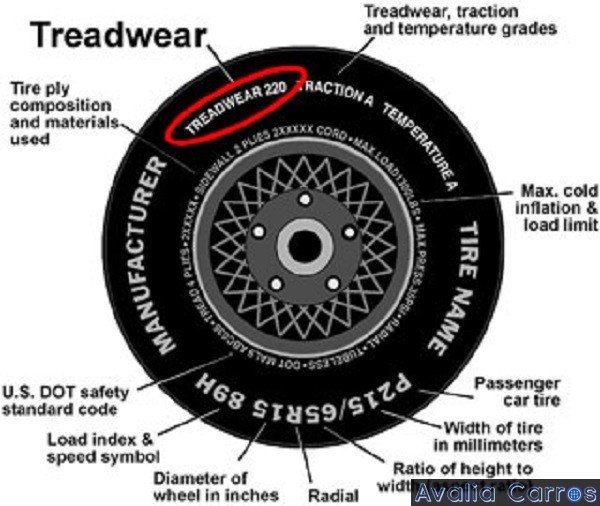 Speed (km/h) Speed (km/h) | 100 | 110 | 120 | 130 | 140 | 150 | 160 | 170 | 180 | 190 | 200 | 210 | 240 | >210 | 270 | 300 | >240 |
Extra Load (XL) is a reinforced model, the load index of such tires is 3 units higher compared to simple tires of the same size.
Reinforced (C) is a designation for reinforced tires, most often refers to light truck models.
All Season (AS), Тous terrain - all season tires.
Any weather (AW) - all-weather tires. Often, icons are used instead of alphabetic characters (snowflake, cloud, sun, etc.).
Mudd & Snow (M&S) are tires specially designed for both winter and all season use.
DA (stamp) - designation of tires with minor manufacturing defects that do not interfere with safe operation.
DOT - Approved by the US Department of Transportation.
E - approved by the Economic Commission for Europe.
Inside - designation of asymmetric tires. The inscription Inside during installation must be on the inside of the car.
Outside - designation of asymmetric tires. When installing, the Outside inscription must be on the outside of the car.
Left - tires with this marking must be installed on the left side only.
Right - tires with this marking must be installed on the right side only.
Made in Germany - designation of the country of origin.
Max Pressure is the maximum allowable tire pressure in kPa.
PSI - Pressure index from 20 to 85 (only for tires with index “C”).
Aqua, Aquatred, Rain, Aquacontact, Water, or Umbrella badge - Indicates that the tires are designed for rainy weather and effectively prevent the effect of aquaplaning.